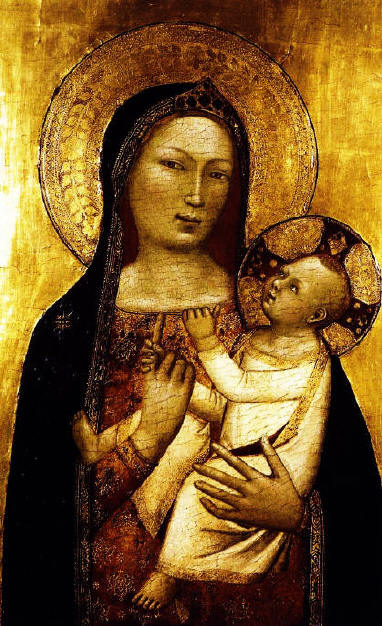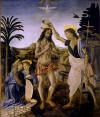Search:: Artists Alphabetically Artists by Country Artists by Century Artists by Movement
Christian Art in the Early Middle Ages
The early Middle Ages were a time of transition and turmoil. The Goths and Huns pillaged and plunder at will. The common man lived in poverty and squalor. During this dark period Christian artists and craftsmen created glorious masterworks. According to John C. Van Dyke, author and art historian, "Out of the decaying civilization of Rome sprang into life that remarkable growth known as Christianity. It was not welcomed by the Romans. It was scoffed at, scourged, persecuted, and, at one time, nearly exterminated. But its vitality was stronger than that of its persecutor, and when Rome declined, Christianity utilized the things that were Roman, while striving to live for ideas that were Christian."
Art in the Middle Ages consisted of religious portraits and Biblically themes allegorical stories. The Church was the main patron, and dictated what and how the painters would paint. The clergy believed that art should be used only as a guide to help the Church bring the unenlightened into the loving light of Christ. The all powerful clergy commissioned emotionally appealing paintings, illuminated manuscripts, and carvings, that acted as visual guides and consolation to the illiterate faithful. These beautiful artworks helped the Church to make converts, as well as embellish the walls of the church. Paintings were overflowing with Christian symbolism that was part of rich visual language understood by all.. There was no such thing as frivolous decorative art or art for arts sake. Preferred Christian themes were the crucifixion, the Madonna and Child, the martyrdoms, the Apostles, and the dramatic deaths, all designed to appeal to the emotions of believers. The Church had more use for the painters craftsman abilities than for his creativity. Although the painter was used more of as a workman many artists managed to infuse their work with individuality and occasionally humor.

Bernardo Daddi Virgin and Child c.1340
Key Descriptive Words and Phrases associated with the Renaissance Movement - rebirth, rediscovery of the classical world, City-state, Humanism, Humanist, Francesco Petrarch, Reform, The Prince, Theocracy, The Inquisition, Human Reasoning, publication of Della Pittura, a book about the laws of mathematical perspective for artists, sfumato, chiaroscuro, linear perspective, Heliocentric Theory, vanishing point, Savonarola, spiritually significant, illuminated manuscript, idealized biblical themes, scriptorium, emotion, illuminator, iconoclast, Age of Discovery, axonometric drawing, curiosity about the natural world, mythology, realistic use of colours and light, Bonfire of the Vanities, Old Testament stories, ethereal and foggy backgrounds, Gospel parables, The Blackdeath, romanticized landscapes, Christian symbolism. Paradise
☼☼☼☼☼
Require more facts and information about the painter and the artists of the renaissance era? Poke around every nook and cranny of the known universe for information this subject. Search Here
© HistoryofPainters.com If you like this page and wish to share it, you are welcome to link to it, with our thanks.
